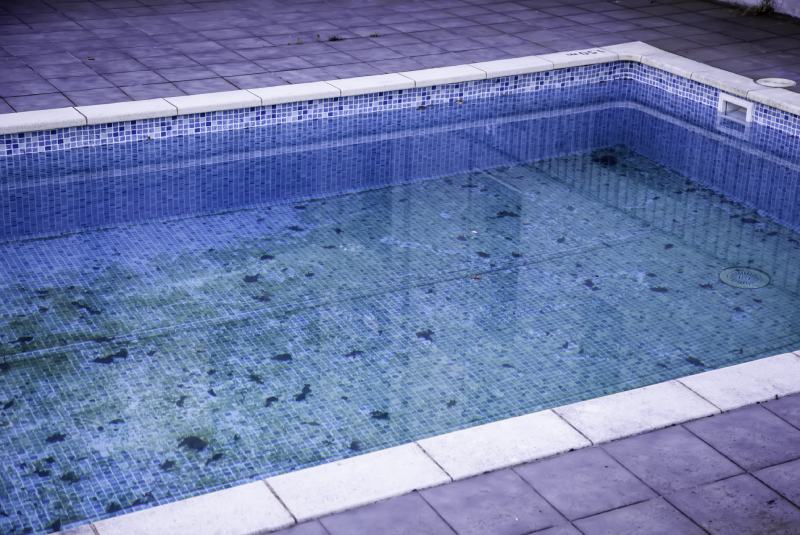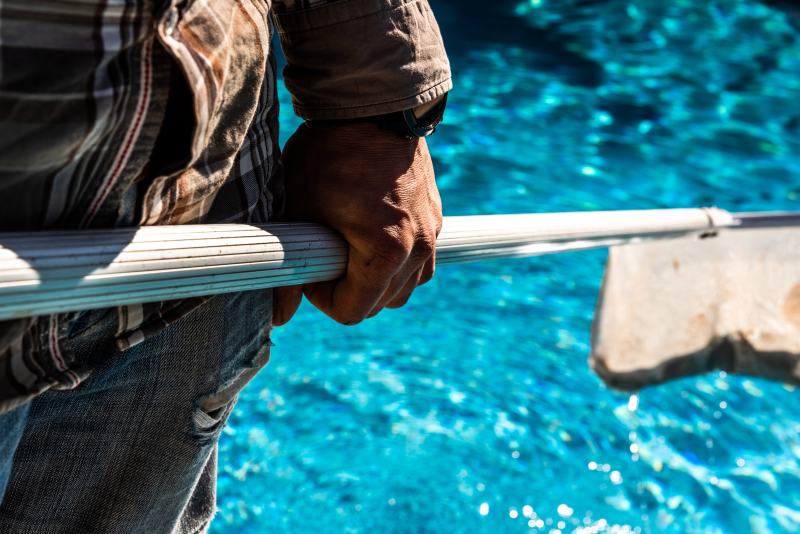Addressing Health and Safety Concerns in an Enterprise Environment
As an experienced swimming pool expert with years of experience maintaining and caring for pools, I cannot emphasize the significance of promptly recognizing and treating pool stains. Failure to do so poses severe health and safety risks that could transform an otherwise peaceful oasis into a potential hazard; understanding these risks is paramount for pool owners who prioritize the well-being of their family, friends and guests.
Pool Owners Need to Understand the Risks of Compliance

Recognizing Different Types of Pool Stains
As various factors, such as metal impurities, organic debris and algae growth, can all cause swimming pool strains, pool owners must familiarize themselves with all types of pool stains to identify and address them effectively. Copper stains are easily identifiable due to their reddish-brown hue caused by copper in the pool water.
Consider The Health Consequences of Neglected Stains
Ignoring pool stains can have severe repercussions for swimmers’ health. Stains become breeding grounds for harmful bacteria and algae that can create serious health risks; skin irritations, eye infections, and respiratory problems are among them. Furthermore, when bacteria or algae contaminate pool water, they increase the chances of waterborne illnesses and threaten anyone in contact with it.
Impact of Stains on Pool Safety
Slip and Fall Hazards Unattended organic stains on pool surfaces, mainly organic matter like algae or mold growth, can make swimming pools slippery. Algae, mold growth or any accumulation of organic matter on these surfaces creates a slick environment which increases the chance of slip and fall accidents ranging from minor bruises to fractures; ensuring all pool surfaces are free from debris reduces this risk while providing swimmers with a safe swimming environment.
Bacteria and Algae Can Grow Together in Water Environments
Stains created by organic material provide the ideal conditions for bacteria and algae to multiply rapidly, polluting water supplies, posing health risks to anyone exposed, turning pool water green-brown in color, clouding up its appearance visually unattractively and possibly harming swimmers. Therefore, regular stain removal and pool maintenance must take place to stop this proliferation.
Pool Surface Damage from UV Radiation
Neglected stains like plaster, tiles or liners can quickly penetrate and damage pool surfaces, eventually leading to discolouration, deterioration and structural issues if left unaddressed for too long. Repairing these damages is expensive and time-consuming – by quickly responding to these stains, pool owners can prevent long-term damage and extend their investment’s lifespan by protecting it against future problems.

Importance of Timely Stain Removal
Maintaining Proper Pool Chemistry
Timely stain removal is crucial to maintaining optimal pool chemistry. Stains can alter the pool water’s pH level and chemical balance, impacting the effectiveness of sanitizers and other chemicals that keep swimmers safe and comfortable in the pool environment. Regularly testing and monitoring pH, alkalinity, and sanitizer levels are required to provide swimmers with a healthy swimming environment.
Utilizing Ascorbic Acid to Remove Copper Stains
Copper stains, an unfortunate reality for pool owners, can be effectively addressed by using ascorbic acid as a pool stain remover. Ascorbic acid dissolves copper deposits without harming surfaces and surfaces. When applied correctly and at the appropriate dosage level, ascorbic acid will eliminate copper stains from pools while returning their appearance to their former glory.
Practical Techniques for Eliminating Organic Stains
Organic stains caused by leaves, grass or other organic debris require effective cleaning and treatment techniques to be removed effectively. Regular pool maintenance with regular pool brush cleaning and enzyme cleaners specifically tailored for pool use may help break down organic material to reduce staining over time and help avoid future occurrences of such problems.
Tips to Prevent and Address Pool Stains
Implement a Regular Cleaning and Brushing Routine
Regular pool cleaning and brushing routines prevent and treat pool stains. Pool owners should regularly skim the water’s surface to remove leaves, insects and other debris; dusting surfaces prone to staining, such as steps, corners and the waterline, will help stop stain build-up from taking hold, keeping their pool looking inviting.
Maintaining Proper pH Levels
Achieving optimal pool water pH levels is critical to avoid staining, with high or low pH levels potentially leading to accumulating scale deposits that stain the water surface and affect clarity. Testing and adjusting pool water’s pH levels regularly within their recommended range can help minimize this problem and promote water clarity while helping avoid staining and encourage transparency.
Removing Organic Debris Promptly
Timely removal of organic debris is vital for keeping pools clear. Leaves, grass and other forms of organic matter can quickly break down in water environments, releasing tannins that cause staining stains on pool bottoms or walls. A pool net/skimmer and vacuum are excellent tools for collecting floating debris while cleaning the bottom regularly to lessen any risk of staining in pools.

Consulting Professionals for Stain Removal can be beneficial
Pool Cleaners
Professional pool cleaners can be invaluable allies when dealing with stubborn or extensive stains in a pool, providing valuable expertise, experience, and equipment necessary to identify each stain type and apply the most efficient removal techniques. In addition, they may recommend appropriate stain-remover products or perform professional pool cleaning to restore its appearance.
Understanding Pool Chemicals and Shocking Them
Pool professionals can offer invaluable guidance in using pool chemicals correctly, including shock treatments. Shocking involves adding a high dose of chlorine or other oxidizing agents into the pool water to eliminate organic contaminants and restore water clarity, eliminating staining while maintaining an enjoyable and safe environment to swim. Understanding when and how often shock treatments should occur will help keep staining at bay while creating a healthy pool environment.
Stain-Free Swimming Environment
Neglecting pool stains can have severe repercussions for swimmers’ health and safety. By understanding the hidden dangers associated with neglected pool stains and taking timely actions to address them, pool owners can ensure a pleasant swimming experience for themselves, their families, and guests.
Regular maintenance, prompt stain removal, and professional consultations are essential in creating an inviting swimming environment that promotes the health and safety of swimmers. Prioritizing the well-being and safety of all pool users will enable owners to maximize the use of their pool while providing peace of mind for pool ownership. An attractive pool void of stain-forming algae makes for an unforgettable aquatic experience!
Specializing in all things pool services, the team behind Finns Pool Services brings more than just technical expertise to West Palm Beach. Rooted in family values, this full-service company has not only built a legacy in top-notch pool care but also prides itself on its vast team of experts and its unwavering commitment to professionalism. With countless successful pool projects under their belt, they stand as a beacon of trust and quality in the heart of Florida. Dive into a world where dedication meets the deep end.




